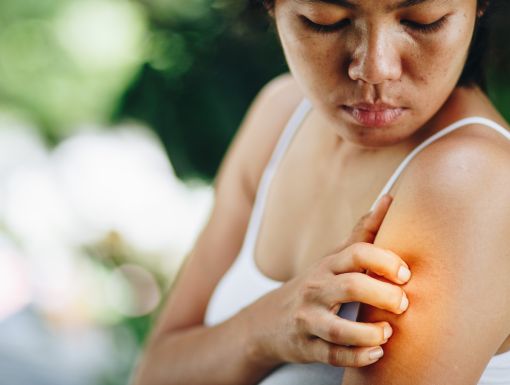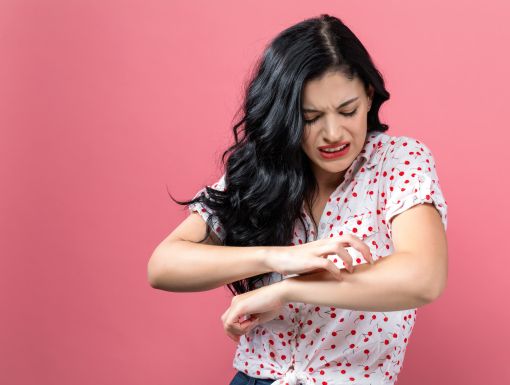
How Can I Identify and Treat a Rash from Poison Ivy?
Did you know approximately 85 percent of the population is allergic to poison ivy, poison sumac or poison oak, and about 10 to 15 percent are extremely allergic? According to the American Skin Association, this is the most common allergic reaction in the U.S. and affects as many as 50 million Americans each year.
Whether you grew up in the city or a rural area, poison ivy is no stranger to all of us. An old saying, “leaves of three, let it be,” is a short warning to be careful near these weeds. Here is what you need to know about identifying and treating rashes from poison ivy.
How can you identify poison ivy?
Throughout the year's four seasons, poison ivy goes through a growth cycle and changes form depending on the season. One standing characteristic present throughout the year is poison ivy has a long stem and three leaf clusters off the branch. Poison ivy blossoms in the springtime and matures in the summertime. Here are a few other identifying factors:
- Cluster of three leaves with pointed ends
- The middle leaf is the largest of the three
- The leaves are generally drooping
- The leaves look smooth or glossy on the top
- During the summertime, the leaves are typically green in color
- In the spring, fall and winter the leaves will turn red or orange
Poison ivy has been identified in almost every U.S. state except Alaska and Hawaii. Poison ivy grows in both rural and urban areas, growing on city sidewalks and tree trunks.
Poison ivy also has two cousins – poison oak and poison sumac. Poison ivy and oak resemble each other the most, with poison oak having up to seven leaves with a hairier appearance. Poison sumac leaves grow in clusters of seven or 13 and resembles a shrub. Though these three plants differ slightly in shape, they all contain an oily resin on the leaves that can cause an allergic reaction.
What to do if you encounter poison ivy
Poison ivy rash is caused by an allergic reaction to an oily resin found on the plant's leaves called urushiol. Poison ivy is not only caused by direct contact with the weed, but it can also come from contact with contaminated clothing. Possible ways to contact poison ivy are:
- If you brush up against or physically touch the plant
- If you touch an item such as a piece of clothing, outdoor tools or you pet’s fur that has been contaminated by the oil
Most of the time, someone does not realize they have encountered poison ivy until a rash has appeared. If you are lucky enough to know you have come across the weed, you can take specific immediate steps (preferably within 10 to 20 minutes after exposure) to prevent the rash from forming. Wash your skin immediately with rubbing alcohol, laundry detergent or dishwashing soap and then rinse with cool water.
- Make sure to wash underneath your fingernails.
- Wash the items of clothing that have encountered the plant. The oily resin from the plant can stick to clothing and continue to cause a rash. It is also important to wear gloves while doing this to prevent a further reaction.
- If your pet has encountered the plant, be sure to wash your pet wearing gloves to rid their skin of the oil.
Even if you have missed the 20-minute window, the above steps should still be followed to lessen the severity of the rash.
What does the poison ivy rash look like?
Once a rash forms on your skin, if you are unsure what it could be, it is good to see a doctor immediately for an accurate diagnosis.
- A rash from poison ivy will appear anywhere from four to 48 hours if you have had a previous rash from poison ivy
- A rash will appear between two to three weeks if you have not had a previous rash from poison ivy
Here are a few signs that the rash forming is poison ivy:
- Intense skin itching in a direct spot before a rash appears
- After the intense itching, a rash will form. The rash will itch, be red and may contain blisters. These blisters may break open, causing fluid to leak out.
- The blisters will scab over and heal within 3 weeks
It is essential to note that the poison ivy rash is not contagious and cannot spread from person to person. The only way the rash spreads is from direct contact with the oil from the plant.
How long does the poison ivy rash last?
The lifespan of a poison ivy rash depends on if you have encountered the plant before. The general rule to follow is:
- If you have previously had a poison ivy rash, the rash can last from one to 14 days
- If you have never had a poison ivy rash, the rash can last for around 21 days or longer before clearing
How to treat the poison ivy rash?
Poison ivy rash can be treated at home if it is mild or only affects a small skin area. If you are experiencing a severe reaction, go to the emergency room immediately. Here are a few ways dermatologists recommend treating the rash at home:
- Take short, lukewarm baths. To ease the rash's discomfort and itch, take a quick bath using colloidal oatmeal, which you can buy online or at your local drugstore.
- Apply calamine lotion to the rash three or four times a day to help relieve the itch. You can also use hydrocortisone cream or any scent-free lotion for the rash. These can all be purchased online or at your local drugstore.
- Apply a cool compress to the rash to clean the rash and alleviate the itchiness. You can do this by wetting a washcloth, ringing it out of excess water and applying it directly onto the rash.
- Do not scratch the rash. Scratching the rash can cause an infection and the rash will take longer to heal.
- Once the blisters form, be sure to leave them alone. This will allow the skin underneath the blister to heal on its own.


